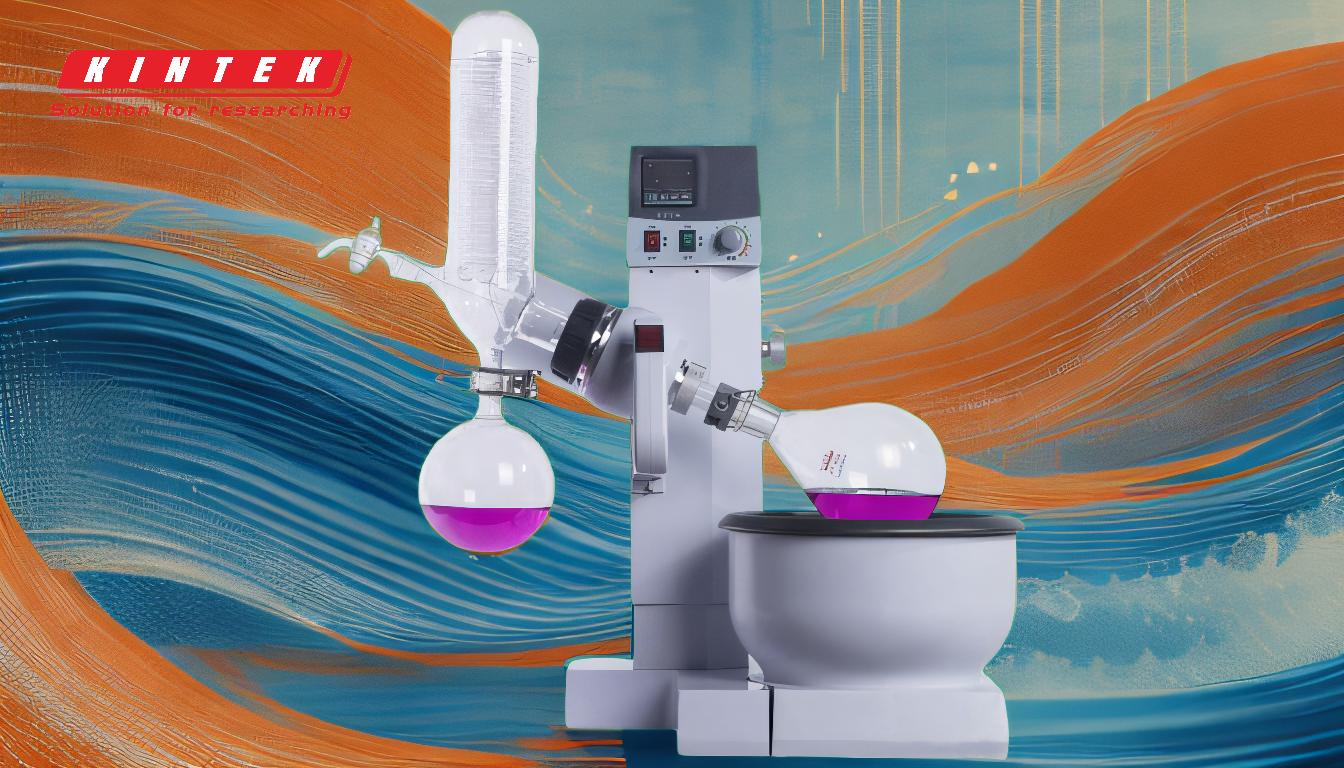Rotary evaporators are widely used for solvent removal and concentration in laboratories, but there are several alternative methods that can achieve similar results depending on the specific application. These alternatives include Falling Film Evaporators, Wiped Film Evaporators, mechanical vapor compression systems, and Solid Phase Extraction (SPE). Each method has unique advantages, such as energy efficiency, reduced reagent consumption, or suitability for specific types of materials. Additionally, alternatives like dry ice condensers can help reduce the need for expensive chillers. The choice of method depends on factors like the nature of the material being processed, the desired throughput, and energy efficiency requirements.
Key Points Explained:

-
Falling Film Evaporator
- How It Works: Operates similarly to a Vertical Shell & Tube Heat Exchanger. The liquid to be evaporated flows downward as a thin film along the inner surface of heated tubes, allowing for efficient heat transfer and evaporation.
-
Advantages:
- High thermal efficiency due to the large surface area of the thin film.
- Suitable for heat-sensitive materials because of the short contact time with the heated surface.
- Can handle large volumes of liquid.
- Applications: Commonly used in industries like food processing, pharmaceuticals, and chemical manufacturing for concentrating liquids without degrading heat-sensitive components.
-
Wiped Film Evaporator
- How It Works: Uses a rotating wiper blade to spread the liquid into a thin, turbulent film on the inner surface of a heated cylinder. This ensures rapid and uniform evaporation.
-
Advantages:
- Excellent for high-viscosity liquids or materials prone to fouling.
- High evaporation rates due to the turbulent flow and thin film.
- Minimal thermal degradation of sensitive compounds.
- Applications: Ideal for distilling or concentrating viscous or heat-sensitive materials, such as polymers, resins, and essential oils.
-
Mechanical Vapor Compression (MVC)
- How It Works: Instead of using a condenser, the vapor is compressed mechanically using a pump. The heat from the compressed vapor is reused to preheat the incoming liquid, improving energy efficiency.
-
Advantages:
- Energy-efficient, as it recycles heat from the vapor.
- Reduces the need for external cooling systems.
- Suitable for large-scale industrial applications.
- Applications: Often used in desalination plants, wastewater treatment, and other industries requiring large-scale evaporation with minimal energy consumption.
-
Solid Phase Extraction (SPE)
- How It Works: A sample is passed through a solid phase (e.g., a silica-based cartridge) that selectively retains the target compounds. The compounds are then eluted using a solvent.
-
Advantages:
- Highly efficient and reliable for separating and concentrating specific compounds.
- Consumes fewer reagents compared to liquid-liquid extraction methods.
- Suitable for small-scale and analytical applications.
- Applications: Widely used in pharmaceutical research, environmental testing, and radiopharmaceutical formulation.
-
Dry Ice Condenser as an Alternative to Chillers
- How It Works: Dry ice is used to cool the condenser instead of a traditional chiller. This can be a cost-effective solution for small-scale or temporary setups.
-
Advantages:
- Eliminates the need for expensive chillers in certain applications.
- Portable and easy to set up.
- Applications: Suitable for small labs or situations where a chiller is not available or practical.
-
Comparison of Alternatives
- Efficiency: Falling Film and Wiped Film Evaporators are highly efficient for large-scale operations, while SPE is more suited for analytical or small-scale applications.
- Energy Use: Mechanical Vapor Compression is the most energy-efficient for industrial-scale processes.
- Cost: Dry ice condensers and SPE can be more cost-effective for small-scale or temporary setups.
- Material Compatibility: Wiped Film Evaporators are better for viscous or heat-sensitive materials, while Falling Film Evaporators are ideal for heat-sensitive liquids with lower viscosity.
By understanding the strengths and limitations of each alternative, users can select the most appropriate method based on their specific needs, such as the scale of operation, material properties, and budget constraints.
Summary Table:
| Method | Advantages | Applications |
|---|---|---|
| Falling Film Evaporator | High thermal efficiency, suitable for heat-sensitive materials, large volumes | Food processing, pharmaceuticals, chemical manufacturing |
| Wiped Film Evaporator | Ideal for viscous or fouling-prone materials, high evaporation rates | Polymers, resins, essential oils |
| Mechanical Vapor Compression | Energy-efficient, reduces external cooling needs, scalable for large systems | Desalination, wastewater treatment |
| Solid Phase Extraction (SPE) | Efficient separation, low reagent use, suitable for small-scale applications | Pharmaceutical research, environmental testing, radiopharmaceuticals |
| Dry Ice Condenser | Cost-effective, portable, no need for chillers | Small labs, temporary setups |
Need help choosing the right solvent removal method for your lab? Contact our experts today!










